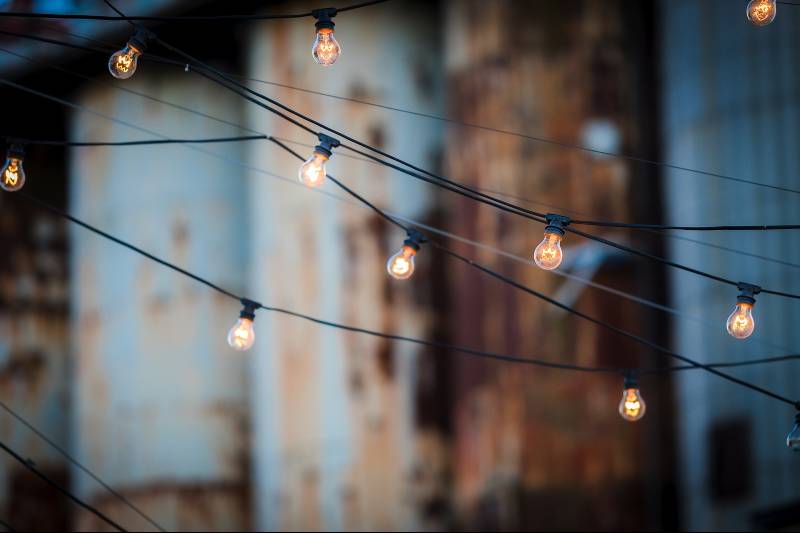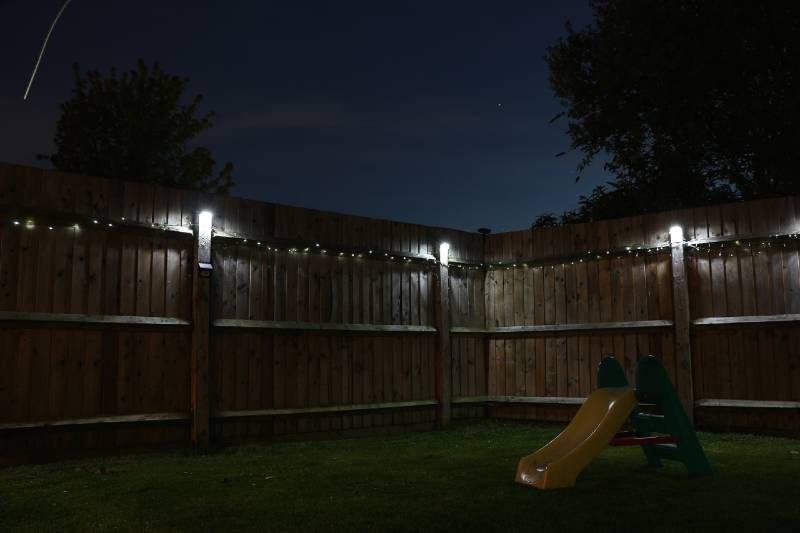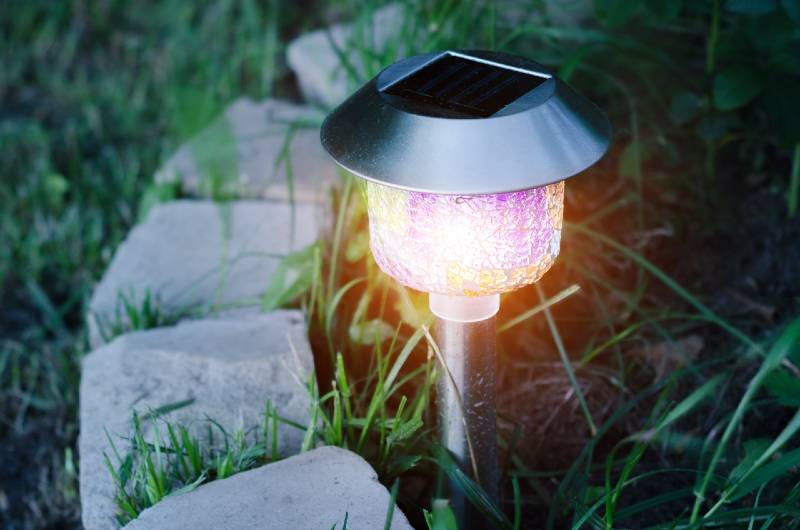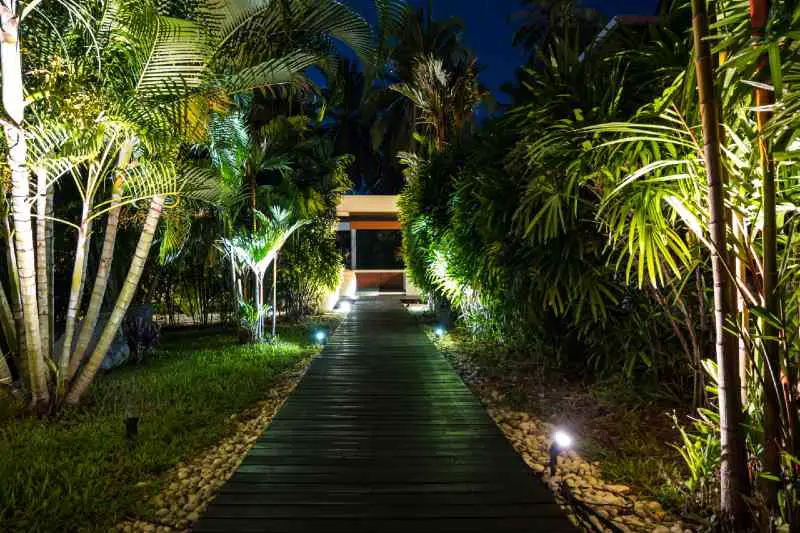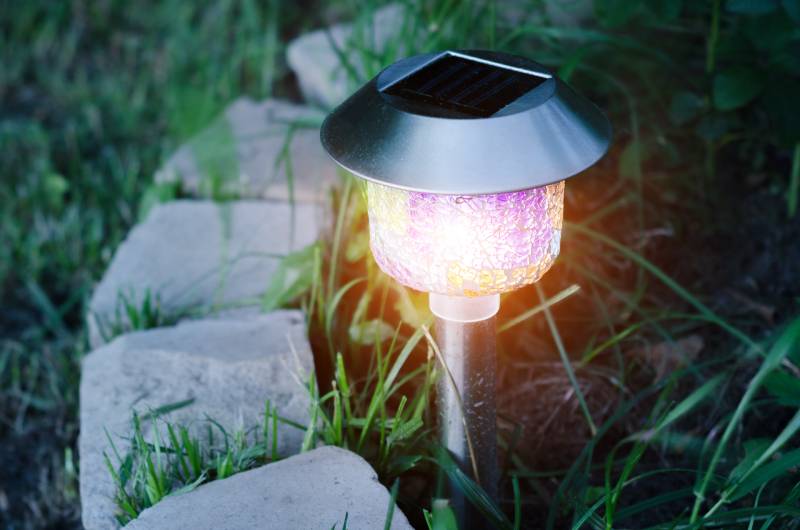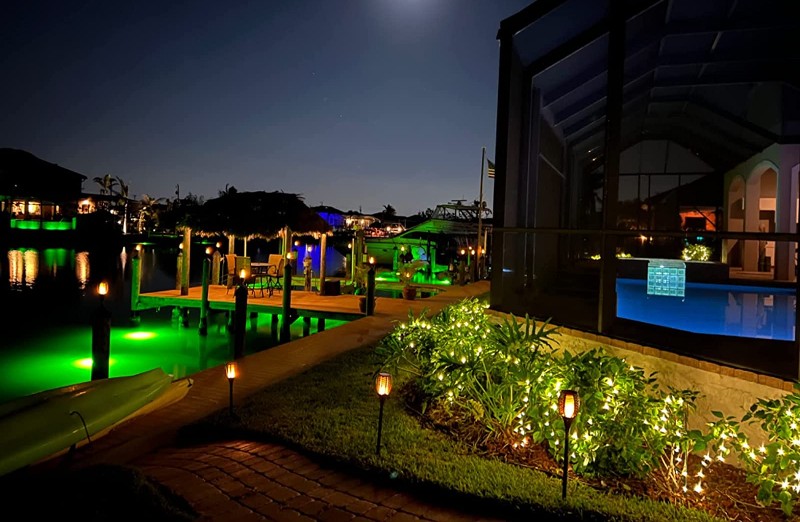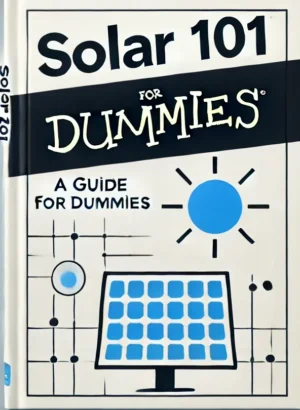After countless evenings of watching my solar lights fall over, I decided it was time to find a fix.
If you’re wondering how to keep solar lights from falling over, I’ve got some tried-and-true methods that worked great for me.
Simple solutions like using longer stakes, adding concrete or foam, and putting extra weights or barriers around the lights can make a big difference.
In this guide, I’ll walk you through these easy steps on how to keep solar lights from falling over and tripping up your outdoor space.
Key Takeaways
- To keep solar lights from falling over, use longer, sturdier stakes that go deep into the ground.
- Strengthen the base of your solar lights with concrete or expanding foam to ensure they stay upright.
- Use pipes or wooden dowels for extra support, driving them deep into the ground for a stable foundation.
- Implement anchors like screws or rebar for enhanced stability, especially in soft soil or windy conditions.
- Protect your solar lights with a small fence barrier to prevent animals and people from knocking them over.
What Are the Ways to Keep Solar Lights from Falling Over?
1. Opt for Longer Stakes
Sometimes, those tiny plastic stakes with solar lights might need to be longer to dig deep into the ground.
This means they can’t grip the soil well, making the lights wobble and easily tip over when it’s windy, even if they’re just nudged.
Here’s a better way to keep your solar lights standing tall: first, take off the lights from those short stakes.
Replace them with longer stakes made of metal or wood—something sturdy that can range from 12 to 18 inches.
These longer stakes go deeper into the earth, creating a solid base that won’t give way easily.
Once you’ve got the right stakes, hammer them into your chosen spot.
Ensure the soil around each stake is packed tight to keep everything nice and secure.
Then, just reattach your solar lights at the perfect height to light up your yard.
I usually prefer to check the stability of the installation by giving a gentle shake to each light.
This way, I can feel if there’s any movement that might need a bit more soil packing or a deeper insertion of the stake.
Related Article: How Far Apart Should Solar Lights Be Placed?
2. Strengthen with Concrete or Expanding Foam
Here’s a more casual way to talk about ensuring your outdoor solar lights don’t fall over.
My favorite trick?
Use concrete or expanding foam around the stakes.
This is super handy if the ground where you’re putting your lights is kind of soft or it gets windy.
So, what you do is mix up a little quick-drying concrete in a bucket.
Just follow what the label says so it sets just right.
Once it’s mixed, you either pour it around the stakes in the ground or spray some expanding foam around them.
Ensure you cover the bases well so they get a good, tight grip on the ground.
The expanding foam is cool because it grows into all the nooks and crannies, making a tight seal.
Now, the waiting game—let that concrete or foam dry and harden completely.
This is the most important part as it needs to firm up to do its job.
The time it takes can vary a bit depending on the weather and what product you’re using, so keep an eye on the instructions for how long it should take.
Once it’s all set, you’ve got yourself a strong base that’ll keep those lights standing tall, no matter if it’s breezy or whatnot.
3. Secure Using Pipes or Wooden Dowels
Okay, I know it might sound like a lot of work to use copper pipes or wooden dowels for your solar lights, but trust me, it’s a game changer.
Let’s break it down into simple steps.
First, find the perfect spot in your garden where you need some light.
Maybe it’s that dark pathway or a favorite flowerbed that could use a spotlight.
Now, grab a dowel or pipe—make sure it’s about 3/4″ thick and at least 18″ long.
This size is ideal because it digs well into the soil and won’t wiggle around, giving your solar lights a firm base to stand on.
Next up, drive that dowel or pipe deep into the ground.
You want to make sure it’s stuck in there well.
This is key because a solid foundation means no shaking or tipping over when the wind picks up or if the pets decide to run wild near them.
Once you’ve got the dowel or pipe securely in place, adjust the height to get your lighting just right.
Lastly, attach your solar light fixture on top and tighten it up so it’s snug.
You don’t want that light coming loose.
In most cases, I prefer to apply this method along with another layer of stabilization like anchoring with concrete or expanding foam.
This dual approach ensures that no matter how rowdy the backyard gets or how blustery the weather is, your solar lights will stay put.
4. Implement Anchors for Enhanced Stability
If you live where the weather can be harsh or your soil is on the softer side, it’s better to use sturdy anchors like screws, pegs, or rebar to keep your lights stable.
These anchors go deep into the ground, ensuring your lights don’t wobble when the wind picks up or when kids and pets are playing around.
First, pick the right type of anchor based on your garden’s soil.
For most places, screws and tent pegs should work well—they’re pretty straightforward to hammer or screw into the ground.
However, if your garden feels more like a sandbox or a mud pit, you might want to go with something stronger, like rebar.
Once you’ve got your anchor, drive it deep into the ground at the spot where you want your light.
And remember, make sure it’s secure!
Then, attach your solar light to the anchor using cable ties, string, or wire.
A smart tip is to use two anchors per light, placing them on both sides of the solar panel to lock everything in place.
And here’s a little pro tip: always keep an eye on your anchors, especially after some rough weather.
Checking them now and then to ensure they’re still tight can prevent any unexpected issues later.
5. Stabilize with Additional Weights
Now, let’s figure out how to keep solar lights stable on hard surfaces where the usual stakes just won’t cut it.
A neat trick is to add some weight around the base of the lights.
This keeps them standing straight and prevents them from toppling over.
First, set your solar lights where you want them on your patio or any hard surface.
Once you’ve got them placed, start surrounding the base of each light with heavy materials like rocks, bricks, or sandbags.
These weights help your lights stay put.
Be sure to spread the weights evenly around each light to keep them balanced.
This balance will stop the lights from leaning or tipping over.
If you’re worried about how this might look, you can always cover the weights with decorative stones or mulch to keep your space tidy.
Also, it’s important to ensure that the weights don’t block the solar panels from catching sunlight.
This way, they blend into your garden or yard and keep doing their job without any hitches.
6. Protect with a Fence Barrier
If you live in a spot where curious animals or bustling people tend to knock over your solar lights, putting up a small fence around them can get the job done.
This simple setup does a great job of keeping your lights steady and safe from those accidental bumps.
Here’s how to get started: Build a little fence in a circle around your solar lights.
You can use wood, metal, or plastic posts—whatever suits your garden’s style.
The fence should be tall enough to keep nosy animals at bay.
Chicken wire or any decorative fencing is perfect for this job and it’s easy to attach to your posts.
Position the fence a few inches away from the lights to give them plenty of space to spread their glow.
However, don’t forget to ensure that the fence doesn’t cast a shadow on the solar panels, preventing them from charging properly.
I usually recommend installing your fence during midday when the sun is at its highest point.
This timing helps you easily spot any potential shadows that the fence might cast as the sun moves.
What Factors Cause the Solar Lights to Keep Falling Over?
1. Animal Interference
Animals can mess with your solar lights.
For example, you might have squirrels that see the stakes as a fun challenge to knock over, or a curious cat that loves to paw at anything that glows.
And it’s not just the small ones—even deer just passing through can brush up against your lights and knock them over.
These interactions, while often innocent, can lead to your solar lights tipping over and potentially getting damaged.
Related Article: How Solar Lights Work?
2. Harsh Weather Conditions
Just like animals, the weather can give your solar lights a tough time.
Strong gusts of wind can knock your lights over before you know it, and even those mild, non-stop breezes can loosen the soil around them, making them shaky.
Then there’s heavy rain, which can soak the soil and make it too mushy to keep your stakes firmly in place.
To dodge these problems, you might want to beef up the base of your solar lights with heavier materials or dig in with deeper, sturdier stakes.
3. Flimsy Stakes
Another big reason your solar lights might keep tipping over is that the stakes they come with just aren’t strong enough.
Often, these stakes are too short, too thin, or not sturdy enough to stand up to even a little wind or environmental pressure.
If they don’t go deep enough into the ground or are made of materials that easily bend or break, your lights are going to have a hard time staying upright.
The best fix?
Swap out those flimsy stakes for ones that are longer, thicker, and made from tougher materials.
4. Faulty Installation Techniques
Sometimes, the problem isn’t just the stakes themselves, but how they’re put in.
If the ground isn’t prepped right, or if the stakes are put in crooked or not deep enough, your solar lights won’t stand a chance.
So, you’ve got to ensure the ground is nice and level, packed tight, and that the stakes go straight down deep enough to hold onto the lights.
Related Article: How to Fix Solar Lights?
FAQs
How to Keep Solar Lights Upright?
To keep solar lights upright, you can use longer, sturdier stakes or add weights around the base.
How Do You Secure Solar Lights in the Ground?
To secure solar lights in the ground, press the stakes firmly into the ground and pack the soil tightly around the base.
How to Make Solar Lights Stand Straight?
To make solar lights stand straight, ensure the ground is level and use strong, deep stakes. Plus, you can add extra weights or a protective fence to prevent tipping.
How to Make Solar Light Stakes?
To make solar light stakes, gather PVC piping and wooden dowels, cut them to length, smooth the edges, and drill a hole in the dowel for a screw. Then, insert the dowel into the PVC pipe and attach it to the solar light housing with a screw.
Conclusion
So, there you have it! We’ve talked about some simple tricks to keep your solar lights from tipping over.
Using longer stakes, putting in concrete or foam, and adding extra weights or barriers all help to keep those lights steady.
Here’s a handy tip: try placing your solar lights near bushes or behind garden decorations to protect them from strong winds.
Now, whether it’s windy or calm, your solar lights will stand tall and keep your space looking beautiful and safe.
Join our solar microdosing newsletter and get bite-sized, easy-to-understand insights into the world of solar energy.
From how solar panels work to building your own DIY solar system, we’ve got you covered.


